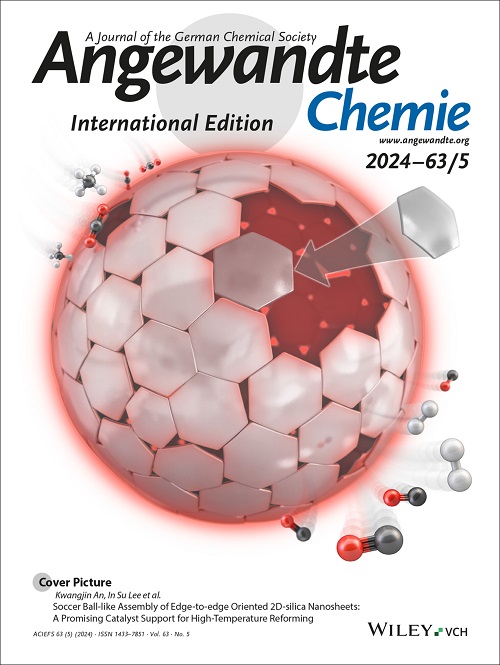A Guest Cation Screening Principle for Enabling Customized Cathode/Electrolyte Interface Chemistry and Self‐Enhanced Aqueous Zinc‐Ion Batteries
IF 16.1
1区 化学
Q1 CHEMISTRY, MULTIDISCIPLINARY
引用次数: 0
Abstract
Intrinsic structural instability and sluggish reaction kinetics at the electrode‐electrolyte interface are two critical concerns that block the application of MnO2 cathode in high‐performance aqueous zinc‐ion batteries. This work proposes a theoretical screening principle to select the compatible guest cation for MnO2 host, not only to strengthen the structure but also customize high‐efficiency cathode‐electrolyte interphase (CEI). As identified, Sr2+ is selected as the suitable intercalation ion that enable in‐situ forming the SrSO4 CEI after partial release upon charge process. Moreover, density functional theory calculation and multiple characterization research indicate that such SrSO4 interphase shows an electronic insulation to stabilize the interfacial pH, inhibit the Mn dissolution, and promote the efficient de‐solvation of hydrated zinc ions. Benefited from the self‐optimizing cathode/electrolyte interface chemistry, the 2.5% Sr‐MnO2 one exhibits higher specific capacity (304.1 mA h g‐1 at 0.5 A g‐1), better rate capability (115 mA h g‐1 at 10 A g‐1), as well as higher capacity retention of 87.9% after 1000 cycles at 2 A g‐1, when compared with pure δ‐MnO2 electrode. This study provides a new insight on understanding the functions of ion intercalation engineering to design robust layered cathode for high‐performance aqueous zinc‐ion batteries and beyond.用于实现定制阴极/电解质界面化学和自增强水性锌离子电池的客体阳离子筛选原理
固有的结构不稳定性和电极-电解质界面反应动力学缓慢是阻碍二氧化锰阴极在高性能水性锌离子电池中应用的两个关键问题。本文提出了一种理论筛选原则,为MnO2基质选择兼容的客体阳离子,不仅可以增强结构,还可以定制高效的阴极-电解质界面相(CEI)。经鉴定,选择Sr2+作为合适的插层离子,可以在充电过程中部分释放后原位形成SrSO4 CEI。密度泛函理论计算和多重表征研究表明,SrSO4界面相具有电子绝缘性,能够稳定界面pH,抑制Mn的溶解,促进水合锌离子的高效脱溶剂。得益于自我优化的阴极/电解质界面化学,与纯δ - MnO2电极相比,2.5% Sr - MnO2电极具有更高的比容量(在0.5 A g‐1下为304.1 mA h g‐1),更好的倍率能力(在10 A g‐1下为115 mA h g‐1),在2 A g‐1下循环1000次后的容量保持率高达87.9%。该研究为理解离子嵌入工程的功能提供了新的视角,为高性能水性锌离子电池及其他领域设计坚固的层状阴极。
本文章由计算机程序翻译,如有差异,请以英文原文为准。
求助全文
约1分钟内获得全文
求助全文
来源期刊
CiteScore
26.60
自引率
6.60%
发文量
3549
审稿时长
1.5 months
期刊介绍:
Angewandte Chemie, a journal of the German Chemical Society (GDCh), maintains a leading position among scholarly journals in general chemistry with an impressive Impact Factor of 16.6 (2022 Journal Citation Reports, Clarivate, 2023). Published weekly in a reader-friendly format, it features new articles almost every day. Established in 1887, Angewandte Chemie is a prominent chemistry journal, offering a dynamic blend of Review-type articles, Highlights, Communications, and Research Articles on a weekly basis, making it unique in the field.

 求助内容:
求助内容: 应助结果提醒方式:
应助结果提醒方式:


